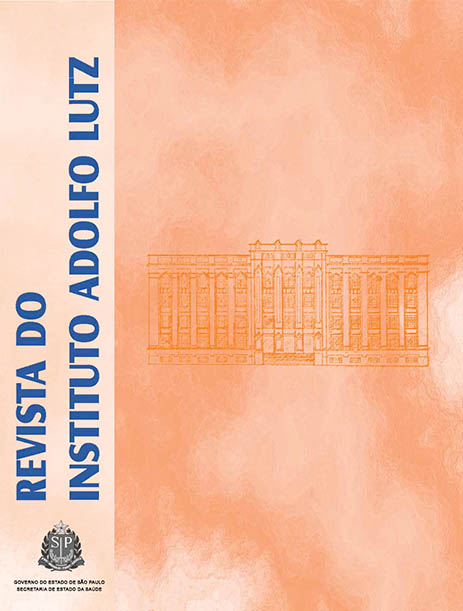Abstract
Hexachlorocyclohexane (HCH) contents were evaluated in water samples collected from the vicinity areas of an environmental liability covering the municipalities of Franco da Rocha, Caieiras and Cajamar (State of São Paulo - Brazil). HCH residues were found in this environmental liability, although its use in agribusiness has been forbidden since 1985 and in the public health campaigns or for domicile sanitizing product since 1998. Twelve drinking water samples were analyzed, including the surface and underground samples from wells and fountains. The determination of isomers α, β, γ and δ-HCH was carried out in accordance with the methodology described in the American Public Health Association (1995) with modification and the analyses were performed in gas chromatography with electron capture micro-detector (μECD). The detected lindane (γ-HCH) contents were in accordance with Brazilian legislation. However, detectable contents of HCH isomers were found in five samples, representing 42% of the total analyzed samples and the highest value (0,075 μg/L) was for a β-HCH isomer, indicating a possible technical HCH contamination.
References
1. Companhia Ambiental do Estado de São Paulo - CETESB. Relação de áreas contaminadas. [acesso 2011 Ago 9]. Disponível em: [http://www.cetesb.sp.gov.br/areas-contaminadas/relacoes-de-areas-contaminadas/15-publicacoes].
2. Agência Nacional de Vigilância Sanitária/ Gerência Geral de Toxicologia – ANVISA/GGTOX. Nota técnica sobre a reavaliação toxicológica do ingrediente ativo lindano. [acesso 2011 Ago 9]. Disponível em: [http://portal.anvisa.gov.br/wps/wcm/connect/c99bf100474595769d6bdd3fbc4c6735/lindano.pdf?MOD=AJPERES].
3. International Agency for Research on Cancer/World Health Organization - IARC/WHO. IARC Monographs on the Evaluation of Carcinogenic Risks to Humans. Hexachlorocyclohexane (technical HCH and lindane), p.5-6 [acesso 2011 Ago 9]. Disponível em: [http://monographs.iarc.fr/ENG/Monographs/vol20/volume20.pdf ].
4. Oliveira RM, Bastos LHP, Dias AEXO, Silva AS, Moreira JC. Concentração residual de hexaclorociclohexano em área contaminada na Cidade dos Meninos, Duque de Caxias, Rio de Janeiro, Brasil, após tratamento com óxido de cálcio. Cad Saúde Pública. 2003;19(2):447-53.
5. Foladori G. Desengenharia. O passivo ambiental na desativação de empreendimentos industriais. Ambient soc. [Internet]. 2002;10:137-41. [acesso 2011 Ago 9]. Disponível em: [http://www.scielo.br/scielo.php?script=sci_arttext&pid=S1414-753X2002000100009&lng=en&nrm=iso].
6. Turnbull A. Chlorinated Pesticides. In: Hester RE, Harrison RM (eds) Chlorinated organic micropollutants. Issues in environmental science and technology. Cambridge: The Royal Society of Chemistry; 1996.p.113–35.
7. Rissato SR, Libânio M, Grafferis GP, Gerenutti M. Determinação de pesticidas organoclorados em água de manancial potável e solo da região de Bauru (SP). Quim Nova. 2004;27(5):739-43.
8. Instituto Adolfo Lutz (São Paulo – Brasil). Métodos físico-químicos para análise de alimentos: normas analíticas do Instituto Adolfo Lutz. 4ª ed. Brasília (DF): Anvisa; 2005.
9. Zhou R, Zhu L, Yang K, ChenY. Distribution of organochlorine pesticides in surface water and sediments from Qiantang River, East China. J Hazard Mater. 2006;137:68-75.
10. Kinyamu JK, Kanja LW, Skaare JU, Maitho TE. Levels of organochorine pesticides residues in milk of urban mothers in Kenya. Bull Environ Contam Toxicol. 1998;60:732-8.

This work is licensed under a Creative Commons Attribution 4.0 International License.
Copyright (c) 2011 Instituto Adolfo Lutz Journal
